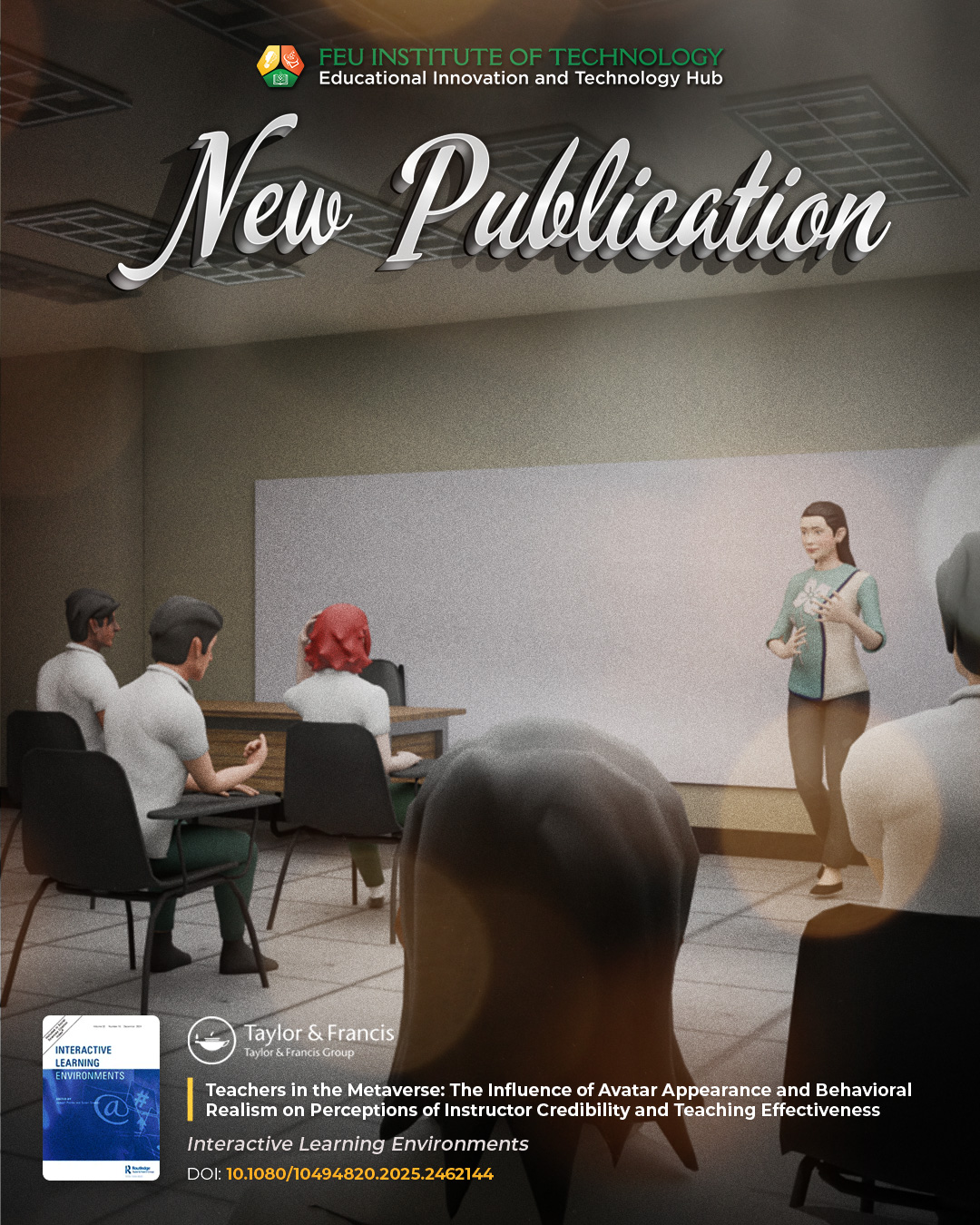Teaching in the Metaverse: Do Looks and Behavior Matter in Virtual Classrooms?
A new publication explores the impact of avatar design and behavior on perceived credibility and teaching effectiveness in virtual worlds and metaverses.
February 13, 2025
Research
The digital landscape, particularly the metaverse, presents a realm of untapped potential for educational innovation. In this online platform, avatars can serve as digital representations of teachers, opening up a dynamic frontier for educational advancement. Numerous studies have shown that students consistently prefer realistic avatars with authentic behaviors, underscoring the potential for these digital representations to enhance teaching and learning experiences in the metaverse.
One recently published study by Dr. Manuel B. Garcia, the Founding Director of FEU Institute of Technology’s Educational Innovation and Technology Institute, explores the impact of avatar design and behavioral realism on student perceptions of credibility and teaching effectiveness in avatar-mediated environments. It also sheds light on the relevance of avatar design and behavioral realism in shaping student perceptions and experiences.

Representing teachers in the digital space
In the metaverse, we interact with each other through avatars. Just like in other virtual worlds, how these avatars look and behave can affect how we perceive them and what we learn from them. This is especially important for teachers, whose avatars are the primary way they connect with students in the metaverse. A teacher's avatar creates their "presence"—how real and engaging they feel to students. Experts believe a more realistic teacher avatar can improve learning by building stronger connections and trust. While this idea makes sense, we need more research to understand how teacher avatars impact learning in the metaverse. As virtual learning becomes more common, it's crucial to determine how to make online teaching as effective as possible, and your involvement in this research is vital.
When we see human-like qualities in teacher avatars, it changes how we learn in the metaverse. This "humanizing" of avatars, called anthropomorphism, makes them feel more real and relatable. Studies show that when we see something as having social potential, like a human-like avatar, we pay more attention and process information better, which could be especially relevant information for teacher avatars because students must trust them to learn effectively. If a teacher's avatar seems believable, students are more likely to trust the information the teacher’s avatar taught. That trust leads to better learning outcomes and a more engaging experience, offering a promising future for virtual learning.
Emphasizing behavioral realism on perceptions
How a virtual teacher acts is just as important as how they look. This study found a surprising twist: cartoonish avatars that behaved realistically were seen as more believable while realistic-looking avatars with the same actions were considered more effective teachers. This difference might be because we expect cartoonish characters to be less competent, so it's a pleasant surprise when they act realistically.
On the other hand, realistic avatars already match our expectations, so their realistic actions confirm their teaching skills. Realistic behavior is key for any avatar teacher. It makes the virtual learning experience more engaging and helps build a better connection between students and their virtual instructors. Like in real life, eye contact, nodding, and expressive hand gestures make students feel more comfortable and encourage them to participate. These small details significantly affect how students learn and interact in the metaverse classroom.
The metaverse is becoming a new classroom, and Dr. Garcia’s study explores how a teacher's virtual appearance affects student learning. Schools and tech developers can use these findings to create better metaverse learning environments, and teachers can use them to improve their virtual presence and connect better with students. With the proper utilization and elements, education in the metaverse can be a feasible platform where institutions can leverage the power of technology to foster learning and adapt to the developments in an evolving digital landscape.
Patricia Bianca S. Taculao-Deligero is a Bachelor of Arts in Journalism Graduate from the University of Santo Tomas. She has an extensive portfolio from working in various local media outlets, with articles focusing on lifestyle, entertainment, agriculture, technology, and local government units, among other subjects. Her specialty is in feature writing. She is also proficient in news writing.
